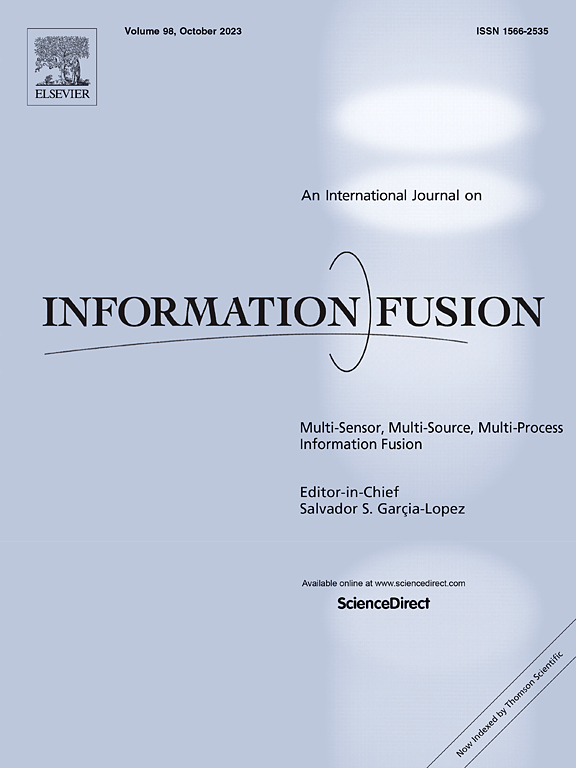Dual-domain decoupled fusion network for semantic segmentation of remote sensing images
IF 15.5
1区 计算机科学
Q1 COMPUTER SCIENCE, ARTIFICIAL INTELLIGENCE
引用次数: 0
Abstract
Semantic segmentation of remote sensing images (RSIs) is a challenging task due to the complexity of spatial structures, diverse object scales, and heterogeneous land-cover patterns. Traditional approaches often struggle to effectively balance fine-grained boundary details and global contextual understanding, especially for high-resolution images. In this paper, we propose DDFNet, a novel dual-domain decoupled fusion network, to address these challenges. DDFNet integrates spatial and frequency domain features through a dynamic decoupling and fusion strategy. Specifically, we introduce a Dual-Domain Decoupled Feature Fusion (DDFF) module that selectively combines high- and low-frequency components from both domains, enabling the model to capture local textures and global semantics. To further enhance segmentation accuracy, we design a High-Order Geometric Prior Generation (HGPG) module, which utilizes gradient and curvature information to improve boundary precision and maintain geometric consistency. Extensive experiments on three benchmark datasets — ISPRS Vaihingen, ISPRS Potsdam, and LoveDA — demonstrate that DDFNet achieves state-of-the-art performance. Ablation studies validate the contributions of the DDFF and HGPG modules, and efficiency analysis shows DDFNet’s strong adaptability to different computational constraints.
用于遥感图像语义分割的双域解耦融合网络
由于遥感图像空间结构的复杂性、目标尺度的多样性和土地覆盖模式的异质性,遥感图像的语义分割是一项具有挑战性的任务。传统方法通常难以有效地平衡细粒度边界细节和全局上下文理解,特别是对于高分辨率图像。在本文中,我们提出了一种新的双域解耦融合网络DDFNet来解决这些挑战。DDFNet通过动态解耦和融合策略集成了空间和频域特征。具体来说,我们引入了一个双域解耦特征融合(DDFF)模块,该模块选择性地结合了来自两个域的高频和低频成分,使模型能够捕获局部纹理和全局语义。为了进一步提高分割精度,我们设计了一个高阶几何先验生成(High-Order Geometric Prior Generation, HGPG)模块,该模块利用梯度和曲率信息来提高边界精度并保持几何一致性。在三个基准数据集(ISPRS Vaihingen、ISPRS Potsdam和LoveDA)上进行的广泛实验表明,DDFNet达到了最先进的性能。烧蚀研究验证了DDFF和HGPG模块的贡献,效率分析显示了DDFNet对不同计算约束的强适应性。
本文章由计算机程序翻译,如有差异,请以英文原文为准。
求助全文
约1分钟内获得全文
求助全文
来源期刊

Information Fusion
工程技术-计算机:理论方法
CiteScore
33.20
自引率
4.30%
发文量
161
审稿时长
7.9 months
期刊介绍:
Information Fusion serves as a central platform for showcasing advancements in multi-sensor, multi-source, multi-process information fusion, fostering collaboration among diverse disciplines driving its progress. It is the leading outlet for sharing research and development in this field, focusing on architectures, algorithms, and applications. Papers dealing with fundamental theoretical analyses as well as those demonstrating their application to real-world problems will be welcome.
 求助内容:
求助内容: 应助结果提醒方式:
应助结果提醒方式:


